#strongbow
Text

223 notes
·
View notes
Photo



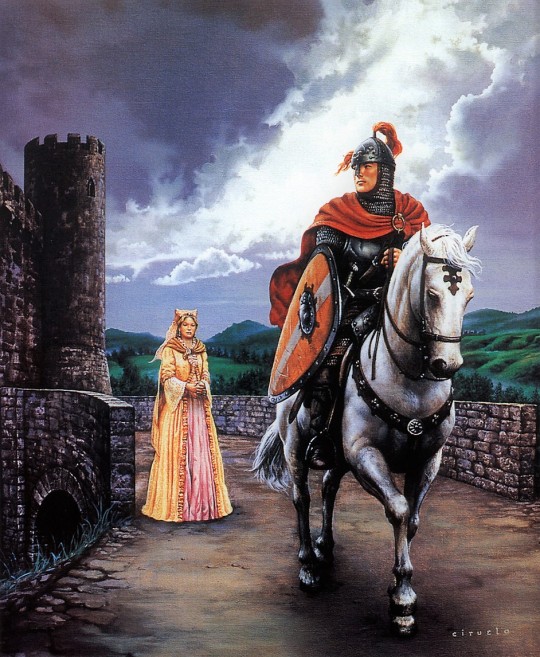



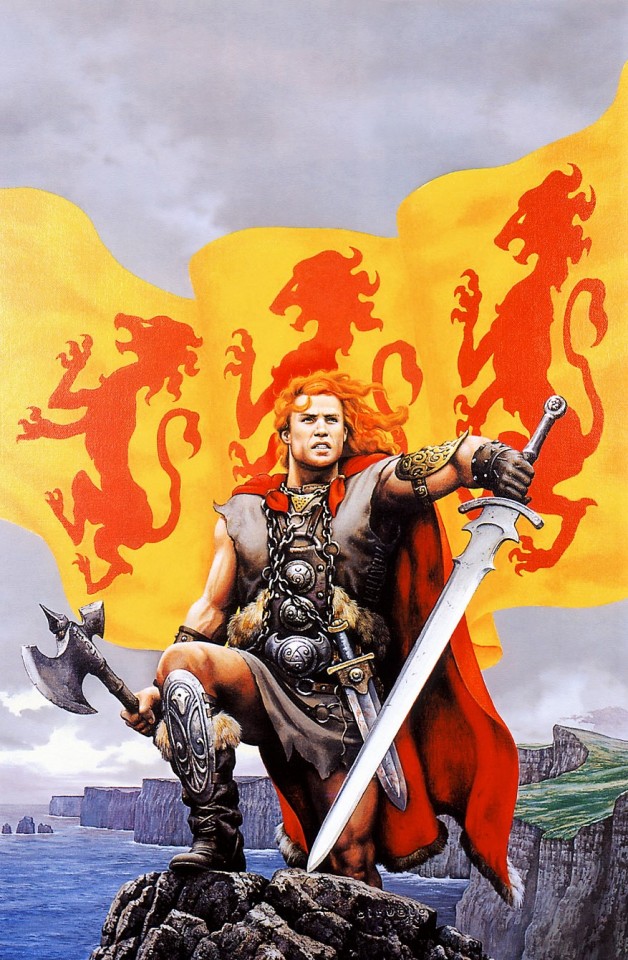
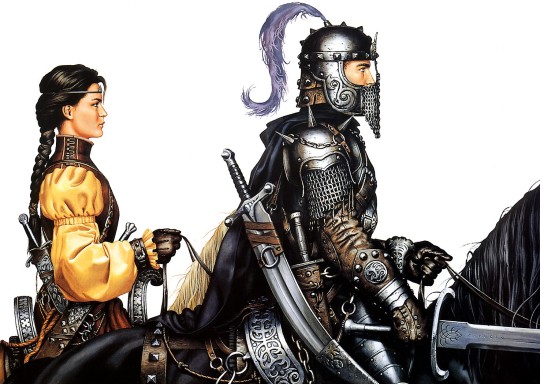
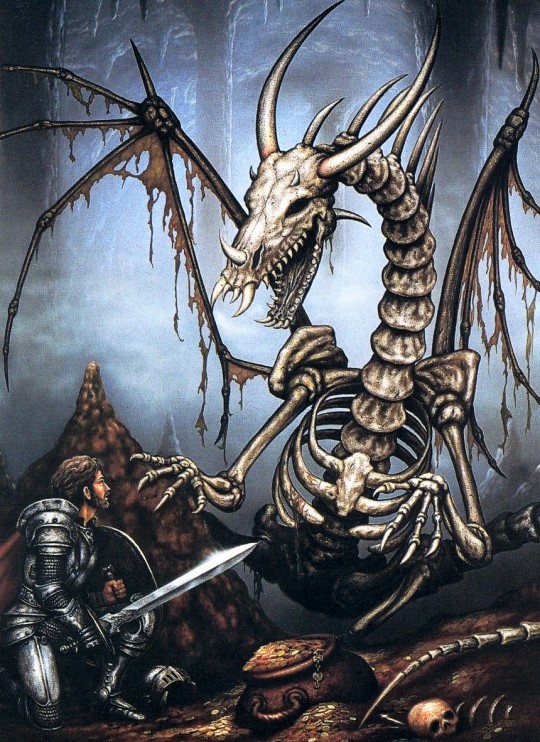
art by Ciruelo Cabral
#ciruelo cabral#80s fantasy art#fantasy novels#cover art#ravenloft#ironhand's daughter#shadow moon#strongbow#brian boru#d&d art#advanced dungeons & dragons#forgotten realms#paladins#knights#dragons#1980s
460 notes
·
View notes
Text
Earth 18: Home of the Justice Riders, consisting of several western heroes, including Strongbow, Bat-Lash, El Diablo, Madame .44, Johnny Thunder, and Cinnamon

#earth 18#active heroes:#Justice Riders#Bat-Lash#Cinnamon#El Diablo#Firehair#Madame .44#Pow-Wow Smith#Strongbow#Superchief#Tomahawkman#Trigger Twins#Johnny Thunder#An Earth frozen by the Time Trapper in the 19th century technologically and culturally#<<in case that's a selling point for you#dc multiverse#dc comics#dc multiverse week
43 notes
·
View notes
Text
Clonmacnoise Monastery – Cluain Mhic Nóis | 'Meadow of the Sons of Nós'
This monastery is situated on the banks of the Shannon, it was founded in 544 AD by St Ciarán on a fertile meadow, or cluain, surrounded by bog. It could be reached only by river or along esker ridge known as the pilgrim’s road. The monastery flourished for 600 years as a centre of learning and religious instruction. It also supplied much of Ireland’s finest Celtic art and illuminated manuscripts…
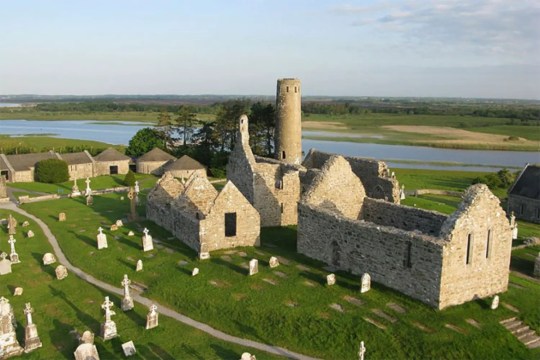
View On WordPress
#Clonmacnoise Crozier#Clonmacnoise monastery#Cluain Mhic Nóis#Dervorgilla#Diarmait Mac Murchada#Dublin#History#History of Ireland#Ireland#Irish#Irish History#Lebor na hUidre#Meadow of the Sons of Nós#National Museum#Normans#Shannon River#St Ciarán#Strongbow#The Book of the Dun Cow#Tiernan O&039;Rourke#Vikings
16 notes
·
View notes
Text
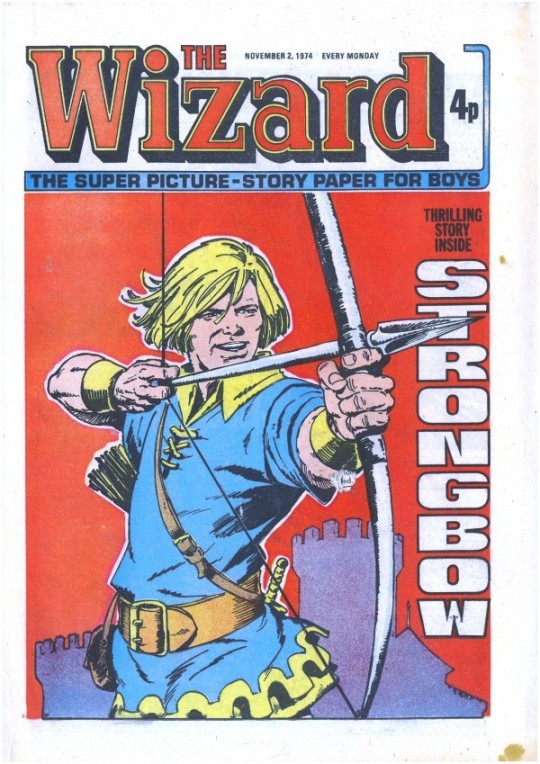
The Wizard No. 247, dated 2 November 1974. Strongbow cover, artist unknown. DC Thomson.
6 notes
·
View notes
Photo

Filigereth character sheet for possumpunk_ (twitter)! the braids, the style, the chainmail, i live!!!
#character sheet#lotro#lotro oc#oc#lotr oc#lotr#gondor#vikobelo#commission#possumpunk_#strongbow#filigereth#not my oc
19 notes
·
View notes
Text
my art for this year
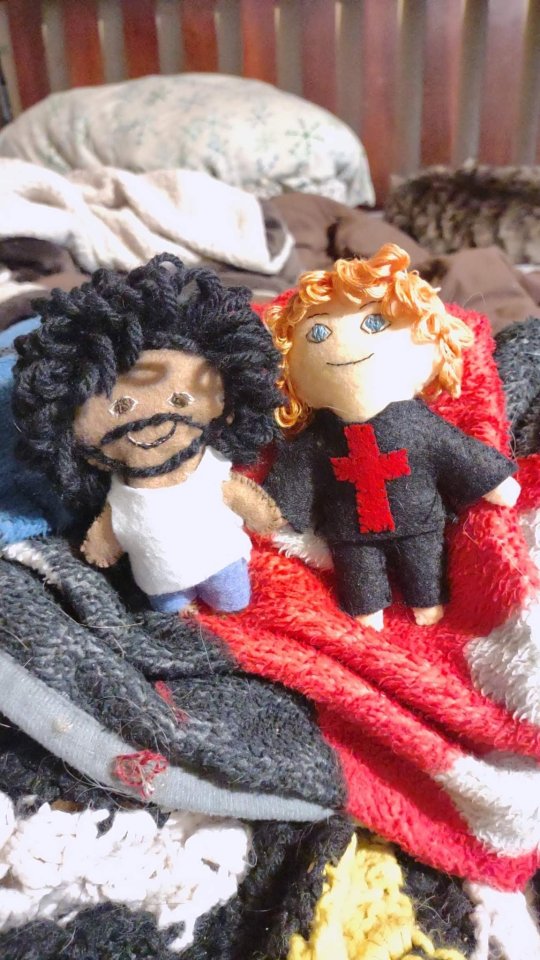
Jan is Joe and Nicky

Feb is my word sampler of the Old Guard (I need to get the movie and the second trade PB on here)

March is my baby

April (you are gonna see him a lot)

And Majid again

The moment in comics that I felt so seen
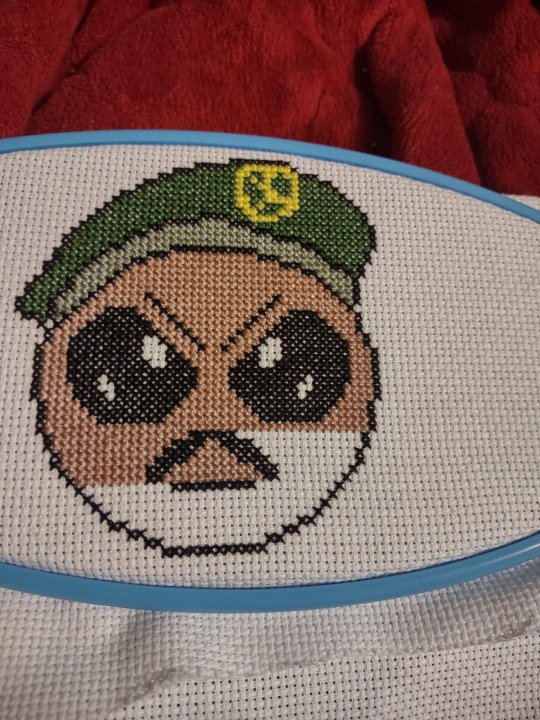
July (not sure why I don't have a finished copy of this on my camera?)
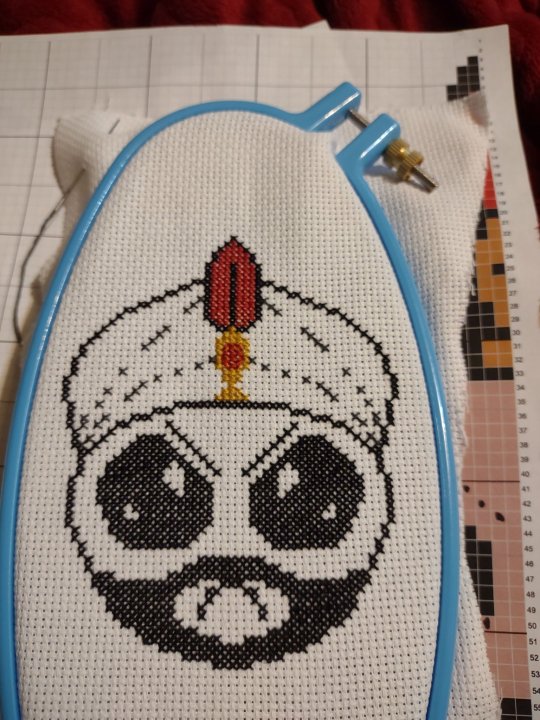
August (he is not finished)

September is my Pop Jafar

October is Strongbow and Moonshade

November is this Beauty


December has been back to Majid and my parsnip
#majid zamari#parsnips#andromache the scythian#ElfQuest#the old guard#Strongbow#Moonshade#Jafar#aladdin 2019#De Oost Raymond#nicolo di genova#yusuf al kaysani#joe x nicky#cross stitch#Felt dolls#the old guard fanart#marwan kenzari
31 notes
·
View notes
Text

Okay but who was gonna tell me that Beleg Cúthalion (Strongbow) was allowed to be reincarnated and now runs a successful cider company?
#andy speaks#my posts#tolkien#silmarillion#lotr#jrr tolkien#the silmarillion#the silm#the silm fandom#beleg#beleg strongbow#beleg cuthalion#the children of hurin#Silmarillion#tolkien shitpost#Tolkien shitposting#strongbow#children of hurin#silm shitpost#silm elves#tolkien legendarium#tolkien lore
28 notes
·
View notes
Text

Beleg by Kimberly80
40 notes
·
View notes
Text
Isabel de Clare 4th Countess of Pembroke (1172-1220 AD). Anglo-Irish women of the nobility in profile...
Isabel de Clare’s life is largely known in detail for her proximity to people in her life during the late 12th & early 13th centuries of Medieval England. Her parents and ancestors were of noble & royal extraction. Her husband rose through the ranks from son of a relatively minor noble to being the man regarded as the best knight and most trustworthy nobleman in all of the Angevin Empire and a powerful statesman who ruled in England in all but name for a brief period. In death he was lionized as the “greatest knight who had lived” and their children would either become nobles & warriors in 13th century England themselves or marry into other noble families of note.
All of this overlooks just how important, strong and capable Isabel was of her own merit. Something her husband and indeed Anglo-Norman law at the time recognized. Despite its male dominance, there were women capable of being major power players in the ranks of nobility & royalty and Isabel played a contribution to that. Her life offers us a unique glimpse into a noble woman’s life during the High Middle Ages in Western Europe.
Royal Roots, Birth & Early Life:
-Isabel de Clare was born circa 1172 AD, somewhere in Leinster (southeastern), Ireland. From the start she was a symbolic & physical bridge between two cultures. She was the result of a political but dutiful marriage, and her physical being would be of crucial importance in later years.
-Her father was Richard FitzGilbert, also known as Richard de Clare, 2nd Earl of Pembroke (1130-1176). Richard would be best known to history by his nickname Strongbow. He was an Anglo-Norman nobleman of the De Clare family. The De Clare or Clare family originated in Normandy and came to England where they accompanied William the Conqueror, Duke of Normandy who would become the first Norman King of England.
-The first Richard FitzGilbert (1035-1090) was a companion of Duke William and distant kinsman. They both shared a common ancestor in Richard I of Normandy (932-996), Count of Rouen & Duke of Normandy. The name De Clare was from the Norman French for a place name, to be from or “of” said location. As a reward for being companion to Duke William in the Norman Conquest of England. Richard FitzGilbert like other Norman nobles was granted landholdings in England, becoming the new English nobility which replaced the Anglo-Saxons of old. Richard’s particular land holding was in centered in the town of Clare in Suffolk England which made him the first Lord of Clare. He also gained territory in Tonbridge in Kent, England.
-Over the generations the family expanded its holdings in England and in the Welsh Marches, Anglo-Norman controlled portions of southern Wales. Strongbow’s father Gilbert de Clare (1100-1148) became 1st Earl of Pembroke under King Stephen of England, gaining control of important parts of the Welsh Marches, including the Pembroke peninsula in southwest Wales. He also held Striguil in southeastern Wales on the River Wye, forming the strategic border between England & Wales.
-Gilbert de Clare was married to Isabel Beaumont, a former mistress of King Henry I of England & daughter of Robert de Beaumont, 1st Earl of Leicester & his wife Elizabeth de Vermandois. Elizabeth was a French noblewoman was the paternal granddaughter of French King Henry I (1008-1060) of the House of Capet. While her maternal grandfather Herbert IV, Count of Vermandois (1028-1080) was a descendant of Charlemagne and the Carolingian dynasty of Franks. Also, by virtue of Henry I’ of France’s marriage to Princess Anne of Kiev, Strongbow and subsequently Isabel de Clare were direct descendants of the Kievan Rus’s royal ruling House of Rurik which ruled Medieval Ukraine & Russia. Also confirmed among their ancestors from this line were Swedish royalty, Polish tribal royalty & possibly Byzantine Greek royalty, if the debated connections regarding Anne of Kiev’s purported paternal grandmother (Anna Porphyrogenita) are indeed true.
-Isabel de Clare’s mother and the wife of Strongbow was Aoife MacMurrough of Eva of Leinster (1145-1188) an Irish princess who was daughter of Dermot MacMurrough, King of Leinster. Ireland at the time was not ruled by one king but was instead made up of several feudal petty kingdoms, Leinster being one of them located in the southeast of the country, a land of rivers, hills and the famed Wicklow Mountains. Aoife’s and subsequently Isabel’s ancestry in Ireland went back to various Irish petty kings & even the vaunted High Kings of Ireland, who ruled as a somewhat symbolic overlord of the other petty kings. This included her paternal ancestor through Brian Boru, High King of Ireland & King of Munster and founder of the O’Brien dynasty who defeated the Vikings at their settlement in Dublin in 1014, taking the area back for the Gaelic natives of Ireland after years of Viking rule. Though Brian Boru died in the process.
-Isabel de Clare’s parents came together in the 1170′s following a power struggle in Ireland between her maternal grandfather Dermot MacMurrough & then High King of Ireland, Rory O’Connor who worried that Dermot would become too powerful as King of Leinster, so he launched an invasion of Leinster, this forced Dermot off his throne and into exile in 1166.
-Dermot’s exile took him to the court of Henry II, King of England & Duke of Normandy who was in France at the time, trying to hold together his many French possessions (Normandy, Brittany, Aquitaine, Anjou etc.) which made up his Angevin Empire. Henry would not personally partake in restoring Dermot to the throne in Ireland, but he did authorize Dermot to negotiate and make mercenary use of some of his Anglo-Norman nobility and their knightly retinues. Strongbow would be one of these Norman nobles Dermot would negotiate with.
-Strongbow promised to assist Dermot in the recapture of his throne, in exchange for Aoife’s hand in marriage and kingship of Leinster upon Dermot’s death, co-ruling with Aoife to give it air of legitimacy among the native Irish. The Norman invasion of Ireland commenced in small waves as early as 1169 with Strongbow himself arriving in 1170 where his Anglo-Norman forces, some 200 mounted knights and 1,000-foot soldiers teamed with earlier Norman war parties from the prior year, they took the port city of Waterford, once a Viking a stronghold. Here Aoife & Strongbow were married, uniting the Irish royalty with Anglo-Norman nobility in a political manner.
-Children would of course cement this marriage with the birth of Isabel probably in 1172 and her brother Gilbert.
-Dermot’s gamble paid off, his Norman mercenaries overwhelmed the forces loyal to High King Rory O’Connor. The Gaelic Irish military in terms of arms & armor were no match for the Anglo-Normans who sported the most high-quality weapons and armor of their day in Western Europe. Dermot was once again agreed to be King of Leinster in agreement with O’Connor. However, his deals with his new son-in-law Strongbow & the other Anglo-Normans unintentionally and unbeknown to them opened the door to the start of England’s several centuries of involvement in Ireland...
-Dermot would die in 1171 shortly after the retaking of the kingdom, leaving his son and son-in-law (Strongbow) to claim kingship of Leinster. His son and Aoife’s brother claimed it under traditional Brehon law while his deal with Strongbow left it as part of the dowry for marriage.
-Meanwhile. Henry II of England was concerned about his Anglo-Norman nobles over in Ireland. Strongbow in particular had through marriage and acquisition of lands, begun a private colonization of Ireland. Other nobles who took part in Dermot’s operation did so too. This resulted in Henry and Strongbow making a deal, in exchange for keeping Leinster and the restoration of Strongbow’s English, Welsh & French landholdings, he would surrender the ports of Wexford, Waterford & Dublin to royal authority directly. He’d also be required to assist Henry on campaign in France against rebels. He was made in title by Henry II, Lord of Leinster & Justiciar of Ireland (chief justice). Henry II arrived in Ireland in late 1172 for a six month stay where royal troops directly loyal to him took over the key cities of Wexford, Waterford & Dublin from the earlier Anglo-Norman mercenaries. All the Anglo-Norman nobles who gained land in Ireland during the initial invasion were forced to pledge fealty to Henry II as Lord of Ireland in exchange for their right to keep their newly colonized lands. Likewise, the native Gaelic kings were to pledge fealty to Henry II as their feudal overlord, essentially ending the now meaningless institution of High King of Ireland. Waves of Anglo-Norman, Welsh, & Flemish colonists began to settle and establish new English towns in Ireland. Some established relations with the Gaelic Irish, intermarrying, becoming a new cultural group which would expand, ebb and flow over the centuries, the Anglo-Irish. Thus began a fusion of Anglo-Norman architecture, warfare, language and with a gradual cultural assimilation of Gaelic customs that began to blur the differences overtime until the early Anglo-Normans became just accepted as Irish. Nevertheless, politically the longer lasting implications of England’s occupation of Ireland had begun.
-Isabel de Clare was born into this new political realty, her maternal ancestral homeland permanently transformed within a few years due to her maternal grandfather’s personal struggle to regain power in his homebase. None of the the participants, including her parents & grandfather had the slightest notion of the longer-term implications of their decisions. Isabel & her brother were, nevertheless, the flesh and blood realty of this new political & cultural fusion. Meant in part as political bridges between two worlds.
-Strongbow intended for his son Gilbert to inherit Leinster and the various holdings in Wales, England and Normandy. His own death came about in 1176 following an infection of the leg. He was buried in Dublin, with his tomb & effigy still found Christ Church Dublin. Aoife took charge of her children’s upbringing hoping to ensure their inheritance. She was by many accounts fierce in this regard, she was also seemingly well-educated for anybody in that time period but especially a woman, a trait she passed on to Isabel. She is also said to have led Anglo-Norman & Irish loyalist troops into battle against those who tried to take Leinster from her, she earned the nickname Red Eva.
-Gilbert de Clare, died as a teenager around 1185. Thus, all the inheritance remained with his mother Aoife and would by right of Anglo-Norman law pass on to his nearest relative, his sister Isabel and any man she would marry.
-Aoife died in 1188 by some accounts, this left the teenage Isabel orphaned without and without her brother. She was, nevertheless, rightful heir to Leinster, the castles in Wales & England that had belonged to her father and paternal grandfather (Gilbert, 1st Earl of Pembroke). She was the 4th Countess of Pembroke in this line after her brother’s brief tenure. Isabel, became a royal ward of Henry II personally. Meaning he would ensure the safekeeping of her legal inheritance and person. He entrusted this to Ranulf of Glanville, Justiciar of England. She was therefore kept in London for her safekeeping.
-In practical terms this royal wardship was essentially a foster home for orphaned nobility until the king could marry them off to some other noble. Sometimes, other nobles would be entrusted as their personal guardian and be tasked with arranging the marriage of the ward to another noble, sometimes to their guardian’s child or even the guardian themself for personal gain. This would of course require the king’s blessing.
-Isabel was described as beautiful, kind & intelligent “the good, the wise and courteous lady of high degree.” She was among the wealthiest heiresses in the Angevin Empire (Henry II’s personal empire which through conquest, inheritance and diplomacy included all of England, parts of Wales, Ireland and most of Northern & Western France). She was well educated like her mother and could speak her father’s language of French, the courtly language of the English royalty and the Anglo-Norman nobility at the time. She could also speak her mother’s native Irish (Gaelic) & Latin, the language of clergy, diplomacy and government bureaucracy. This coupled with her bloodlines would be of tremendous political import, meaning she could navigate the Irish and Anglo-Norman cultures she was born of. Rather than her education in language, courtly manners, warfare, diplomacy and politics being perceived as a threat to any husband, it would have likely been seen as a great asset.
-Her hand in marriage was promised by Henry II, to one William Marshal in 1189. Marshal was himself an Anglo-Norman noble born and raised in England around 1147. He was the son of a relatively minor noble in England’s West Country with his mother coming from a more distinct Norman family. He came of age through training as a knight with his mother’s relative in Normandy, enduring a six-year apprenticeship in knightly warfare, court etiquette & the arts. He saw some combat but was assigned to the personal service of England’s Queen Eleanor of Aquitaine and then the service of her and Henry II’s son, Henry the Younger. They bonded especially in the late 1170′s by becoming famous knights on the European knightly tournament circuit that was just blossoming at the time. Marshal became perhaps the most renowned tournament knight of all, capturing or unhorsing some 500 knights. Henry the Younger would eventually die after Marshal served him for over a decade loyally.
-Marshal then found himself in Henry II’s personal service and during a war against the King of France who was briefly joined by Henry II’s son and heir Richard where he personally unhorsed Richard with a lance, killing the horse but sparing the prince. Supposedly, the only man to do so. After Henry II’s death, Richard rose to the throne of England & Normandy. He was preparing to go on Crusade to the Middle East and liberate Jerusalem from Muslim rule. He would in time be known as Richard the Lionheart.
-Despite Marshal’s recent opposition with King Richard, the new monarch kept Marshal in his service. He also fulfilled his father’s promise to wed Isabel de Clare to William Marshal. This would make Marshal not only a wealthy and increasingly influential knight but by right of marriage make him now one of the wealthiest landowners & nobles in the Angevin Empire.
Marriage, until death do you part;
-William Marshal & Isabel de Clare were married in August 1189 in London. There was an age difference, she was not quite 18 and he was in is early 40′s. Despite the political nature of the marriage, it appears to have been a genuinely happy one by all accounts. Neither party appears to have been unfaithful to one another. The written records show a great mutual appreciation for one another and produced 10 children, 5 sons and 5 daughters over the next several decades.
-Marshal was technically by right of marriage, Earl of Pembroke but he would not officially acquire the title in his own name until 1199, a decade after his marriage. Nevertheless, he was overlord of Leinster and Striguil and set about making improvements to the castles both he had acquired in England & France for loyal service to the monarchs but his marital gains in Wales & Ireland.
-For the first decade of marriage, William was in service to Richard the Lionheart, particularly when he was gone on Crusade, he stayed behind as a member of the ruling council. This kept him in England, Wales & France mostly, with little attention to affairs in Ireland. Isabel for her part focused on raising a family and supporting her husband as he navigated politics. Though his wartime commitments to defending England from rebels & the French throne often kept them separated. Isabel, appears to have been like her mother before devoted to ensuring the cultured learning of her children.
-Affairs in her native Ireland wouldn’t be pressing for the Marshal family until around the year 1200, during the reign of Henry II’s youngest son with Eleanor of Aquitaine, John. John became king after the death of his eldest brother Richard who had returned from years in the Crusades and then a captive in Germany from a rival monarch, found himself campaigning against Philip II of France (his father’s rival) to regain territory that had been lost under John’s regency of throne. John was eventually back in Richard’s good graces when the Lionheart died of infection from a crossbow wound fired by a rebel soldier in southern France where Richard was campaigning to suppress a revolt.
-John was now King of England and had a reputation for being paranoid, highly emotional and making rash decisions, making him more unpredictable than his older brothers and father.
-Marshal found himself both in John’s good graces and bad graces at various times over the years. He and Isabel were turning to press their rightful rule in Leinster in the early 1200′s despite John’s warnings he not to do so. John like his father Henry II had been concerned about Strongbow now worried Marshal and Isabel would be too powerful and independent in Ireland. Indeed, in the two decades since the Norman invasion of Ireland, the Anglo-Norman nobility who settled there had become accustomed to their own relative autonomy. Loyalty to the king was in name but in practice, so long as they didn’t rebel against the king, they were basically free to do as they please. John’s predecessors did little to enforce this and initially John was more concerned about England & France.
-Marshal & Isabel helped develop the town of New Ross in Leinster, an English town separate from the Gaelic towns nearby, it was peopled with English & Welsh colonists, many of whom were part of the Marshal family retinue and to whom they owed their feudal allegiance. The castles of Kilkenny, Trim & others were developed and expanded by Marshal & Isabel.
-Meanwhile, Marshal earned John’s ire for having paid homage to Philip II of France in exchange for retention of Norman lands after the French kicked John’s English armies out of Normandy, forever losing his ancestral duchy of Normandy to France.
-Concerned of Marshal’s power in Ireland and anger over his dueling homages to John in England and Philip in France. John organized for Marshal to come pay homage in England where he was duly placed under house arrest at the royal court. Meanwhile his own Justiciar in Ireland, Meiler Fitzhenry who had his own ambitions on Leinster invaded using his own Irish & Anglo-Norman forces with John’s blessing. John sought to teach Marshal a lesson and increase personal control over Ireland by having a Norman noble with more loyalty. It also worked in Fitzhenry’s favor.
-Marshal himself was considered fair if not especially popular among the Anglo-Normans already settled in Leinster under his rule. While the native Gaels were less than enthused by him or any other Anglo-Norman lord. Isabel, however, appears to have been the critical element & saving grace for Marshal. Given her ancestry including the native Irish rulers of Leinster and the Anglo-Norman new elite, her command of language & diplomacy appears to have held things together while this Anglo-Norman civil war with the king’s blessing raged in Ireland.
-in 1208 Fitzhenry’s men besieged Isabel (who was pregnant) and the Anglo-Normans who were loyal to Marshal all while Marshal himself and his sons remained personal hostages of King John. Only thanks to an alliance between Marshal’s & Isabel Anglo-Norman loyalists with another rival of Fitzhenry, Hugh de Lacy (1176-1242) Anglo-Norman noble who was first Earl of Ulster did the war come to an end in Marshal & Isabel’s favor. Isabel is said to have helped direct the defense of her castles under siege while de Lacy’s men came to their relief, defeating and capturing the men John had sent to assist Fitzhenry.
-Fitzhenry remained a noble in Ireland but he was removed as Justiciar. Marshal was released by John, and he was allowed to reunite with Isabel.
-Isabel’s day to day to involvement in the civil war is hard to gauge but almost certainly if not the military matters, the diplomatic ones she learned from her Irish princess mother, along with her symbolic blood ties to the Irish & Anglo-Norman nobility of Leinster still held important sway. As Marshal had said prior to his departure to his custody in England, all he had emanates from her. This was mostly true in a political and legal sense, but he appears to have meant it in a romantic sense since she was his faithful wife & mother of his children, the vessel to his dynastic future.
-In the coming years, Isabel & Marshal looked to marrying off their children to important Anglo-Norman nobility. Though successful in this regard and Marshal & Isabel have thousands if not millions of descendants today, none of their sons would bring about descendants meaning, their holdings in Ireland, Wales and England would transfer to other families since their daughters were married off into other noble families and hence the Marshal dynasty was short lived-in terms of male direct descendants. All five daughters Maud, Isabel, Joan, Eva & Sibyl all had children that lived and went onto have descendants that live into the modern era, including members of the British royal family today as well as numerous people in America and elsewhere due to colonial descendants from English nobility.
-Marshal found himself back in John’s good favor and counselled him during the rough times of the First Baron’s Rebellion (1215-1217). He also helped guide John to signing the famed Magna Carta, meant as a peace treaty to ensure certain royal guarantees for the rebellious nobility. Making Marshal one of the Magna Carta “signers”, though the peace was broken shortly thereafter, and John died of illness during rebellion. To make matters worse England’s civil war between nobles revolting against John’s excesses and those loyal to him, including Marshal now attracted the attention of the French king Philip II and his son Louis. The rebel barons now swore fealty to Louis and asked he take over as King of England. Marshal had been made guardian of John’s son 9-year son who was crowned Henry III, making him the 4th crowned King of England that Marshal would serve. Marshal was styled as “Guardian of the Realm” and swore to defending England and its rightful king from the predations of the rebel barons and the French pretender.
-As regent he was now the head of the country in practical matters, yet he was also 70 years old. Marshal would help Henry III and England’s royalist forces when the war when at age 70 and donning knight’s armor one last time he would lead a royalist force to defeat a combined Anglo (rebel)-French force in the Battle of Lincoln in May 1217. This along with the English naval victory over France at Sandwich ended the war in the royalist favor. Henry III was recognized by France at the rightful King of England and the rebels would be forgiven in exchange.
-Marshal won the war for England but his old age was catching up with him. He now set about as Regent of England on behalf of Henry III to try and restore the treasury which was drained under John. He also reissued updated versions of Magna Carta, later cited by historians as a cornerstone moment in the gradual expanding of human rights and democracy, though the original document was narrow in scope and intended for the nobility and the preservation of their rights against royal abuse. It would influence English common law and American Constitutional law in centuries to come.
-From 1217-1219 Marshal was the de-facto the ruler of England, he wasn’t always successful, but he did ensure some measure of peace and lay a foundation that Henry III’s other regents and the king himself could later build upon.
-Isabel remained faithful to the very when Marshal died at home near Reading England in May 1219. She was said to have wept uncontrollably at his passing and could not walk during his funeral procession to London where he was buried in Temple Church.
-Nevertheless, evidence shows that despite her husband’s passing she immediately set about ensuring inheritance was due. Writing the other regents that her lands in Ireland, Wales (minus Pembroke which went to their eldest son) and England were duly granted in her name. She also negotiated with the French king to ensure inheritance of her Norman lands. She even got William Marshal II, their eldest son the hand in marriage to Henry III’s younger sister Princess Eleanor, though this marriage would produce no heirs.
-Isabel’s son William Marshal II was effective as agent managing her various estates, but illness caught up with her in March 1220 and she died in Wales ten months after her husband’s death. She was buried Tintern Abbey near Striguil Castle, now Chepstow Castle which had belonged her father Strongbow and his father before him. Her grave is there to this day alongside her mother Aoife of Leinster. Though the abbey which the De Clare & Marshal families patroned is now in ruin, the grave markers are located on the ground.
-So passed a woman of high birth within the High Middle Ages of Western Europe. She was born of two different cultures and served as a living bridge immersed in the customs of both. As a result, she was given a unique and rich in-depth education unusual for anybody for the times but especially someone of her sex. Her life is mostly known for a seemingly peripheral role in relation to her family and acquaintances of great political importance but the evidence we have suggests she was regarded by especially her family and husband in particular as an absolutely vital and strong character in the events of the time. She played a part in shaping the history of nations, by dint of her birth and by her cultured and determined character.
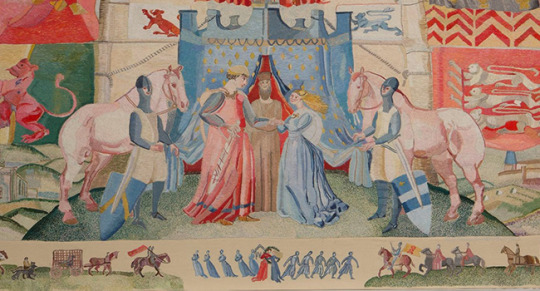

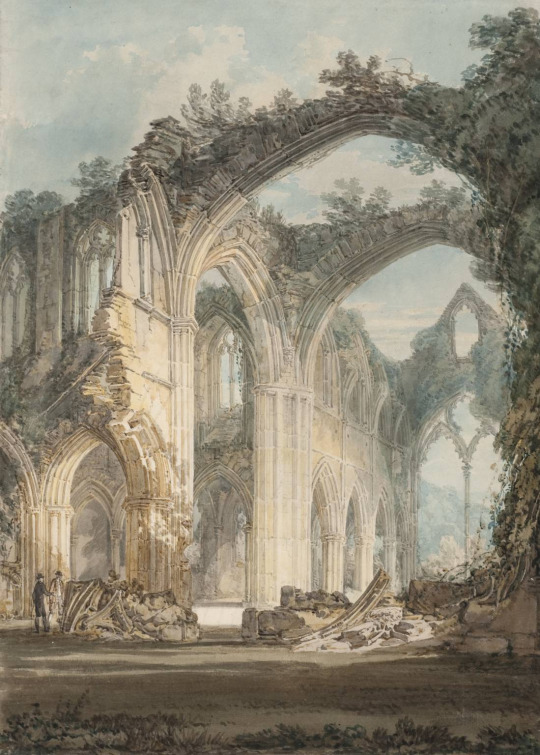


#middle ages#england#france#anglo-norman#medieval#William Marshal#knighthood#chivalry#ireland#leinster#castles#normans#nomandy#de clare#strongbow#wales#chepstow castle#princesses#countess#brehon law#eva of leinster#high middle ages#henry ii#richard the lionheart
11 notes
·
View notes
Text
Great Danes & Bull Terriers by Strongbow Dog Breeder Nancy and Glen Cosby. They have a large acreage farm in Southern Ontario where they share their lives with their Great Danes, Bull Terriers, and other animals that reside on the farm. https://strongbow-greatdane.com Call (905) 894-4809.

0 notes
Text

Sur la Grand Place de Mons
Au café le Ropieur
Il n'y a plus de zone réservée aux fumeurs dans ce café
Dommage
0 notes
Photo

1 note
·
View note
Text
Strongbow Hard Cider cupcakes

0 notes
Text
#OTD in 1170 – Richard de Clare (Strongbow) marries Aoife Ní MacMurrough and sets a precedent for Norman rule in Ireland.
Aoife Ní MacMurrough, also known by later historians as Eva of Leinster, was a noble, princess of Leinster and countess of Pembroke. She was the daughter of Dermot MacMurrough, King of Leinster and his second wife, Mor O’Toole, a relation of St Lawrence O’Toole.
Following the Norman invasion of Ireland that her father had requested, she married Richard de Clare, 2nd Earl of Pembroke, better known…

View On WordPress
#Aoife Ní MacMurrough#Dermot MacMurrough#Eva of Leinster#Ireland#Marriage#Norman Invasion of Ireland#Red Eva#Richard de Clare#Strongbow
7 notes
·
View notes
Text

The Wizard No. 254, dated 21 December 1974. Strongbow cover. DC Thomson.
7 notes
·
View notes